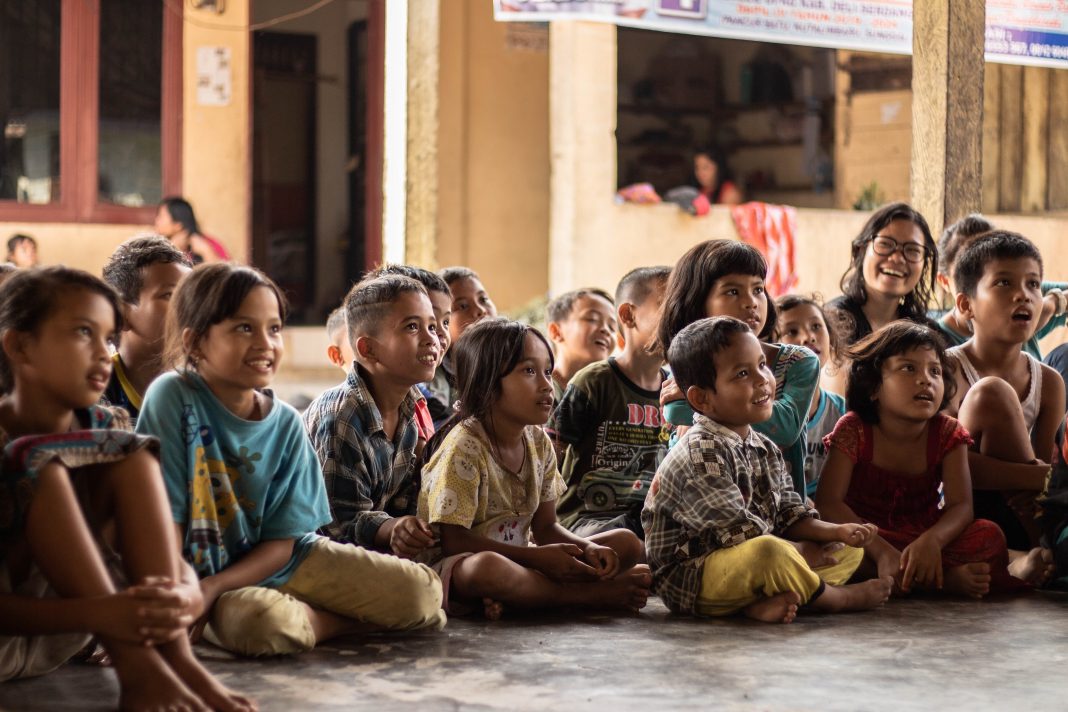“Everyone has the right to education.” That is the first sentence of Article 26 of the Universal Declaration of Human Rights (UDHR), which serves as the basis for international human rights law. According to this article, education is a fundamental right that everyone, including those with disabilities, has the right to obtain without discrimination.
The latest UNICEF report estimates that nearly 240 million children are living with disabilities worldwide, both physical and mental impairments, which means one in ten children lives with this condition. Just like any other children, they also have dreams that they want to reach. Thus, they have the equal opportunity for education as other children. Inclusive education is the solution.
Inclusive education means all children, regardless of their backgrounds, attend the same classroom and school, including those with disabilities. It allows children with disabilities and children without disabilities to learn together. They will receive the same education from the same teacher.
Inclusive education was first developed in Scandinavian countries such as Denmark, Norway, and Sweden. However, the idea of inclusive education emerged internationally during the World Conference on Education for All in 1990. Then, the idea of inclusive education was affirmed at the World Conference on Special Needs Education held in Salamanca, Spain, on June 7–10, 1994. The conference adopted a framework later known as The Salamanca Statement and Framework for Action on Special Needs Education. Salamanca Statement is the first international legal basis that specifically addresses inclusive education and its application. It gives those with special needs equal opportunity to attend public schools to eliminate discrimination in society.
Another international regulation that serves as a legal basis for inclusive education is the Convention on the Rights of Persons with Disabilities (UNCRPD), adopted in 2006. Article 24 of the UNCRPD states the right to education for persons with disabilities; they ought to receive a non-discriminatory education on the basis of equal opportunity. UNCRPD also emphasizes that States Parties shall ensure that people with disabilities should not be excluded from free and compulsory primary education or secondary education on the basis of disability.
In terms of inclusive education, Italy is one of the most successful countries in implementing it. Since the 70s, Italy has opened the line between people with disabilities and without disabilities in education. It began with the passage of “Integrazione Scolastica,” which established inclusive education in the country. The law was then followed by other regulations that strengthened inclusive education in the country. Despite numerous challenges, Italy’s implementation of inclusive education has several beneficial effects. For instance, it makes teaching methods more creative and varied, creates better learning and socialization outcomes, and builds a better classroom atmosphere.
In contrast to Italy, the new idea of inclusive education is relatively in Indonesia. It began in 2004 when Indonesia’s national conference was held in Bandung. It led to the establishment of the Bandung Declaration, which affirmed Indonesia’s commitment to inclusive education. Then, there was also an international symposium in Bukittinggi in 2005 that engender Bukittinggi Recommendations on the development of inclusive education. However, inclusive education as a system is first time mentioned in Article 10 of Law No. 8 of 2016 on Persons with Disabilities. It states that persons with disabilities have the right to obtain proper education in an inclusive and special manner.
It was then implemented in 2019 when the Minister of Education and Culture issued the Minister Regulation No. 44 of 2019 which included persons with disabilities in the public school’s enrollment system called “Jalur Afirmasi.” Back then, special schools like Sekolah Terpadu and Sekolah Luar Biasa (SLB) were the only options for children with disabilities. But now, they can attend public schools like any other child thanks to this regulation.
As a new system, Indonesia faces many challenges regarding the future implementation of inclusive education. First, teachers who are used to dealing with students without disabilities should change their teaching strategies. Teaching students with disabilities require extra effort to understand their different emotions, characteristics, and personalities. Teachers who hold a central role in education must treat them equally without discrimination. In order to facilitate inclusive learning, teachers must learn sign language as well. Furthermore, teachers also need specialized pedagogical education to acquire an understanding of this inclusive education.
Second, the school’s current facilities are still inadequate. Some people with disabilities require special facilities that can support their daily activities—for example, an elevator for those with physical disabilities. In Indonesia, not all schools provide these facilities, so this needs special attention from the government.
Third, the current curricula are still aimed at students without disabilities. The target of inclusive education is not only academic achievements, so one-way learning is irrelevant. The paradigm that education aims to achieve academic success must be changed in the inclusive education curricula. In addition, it is also necessary to have sign language learning in the curricula.
Fourth, when children with disabilities enroll in public schools, they are more likely to experience unfair treatment and discrimination. It can come from peers as well as teachers. Therefore, in order to eradicate discrimination, many parties, including the disability community, the government, and educational institutions, must work together to build an understanding that every human is born equally.
Despite the challenges, inclusive education is a significant step towards eradicating discrimination and ensuring that everyone has equal access to education. All human beings are created equal, and every child—regardless of their condition—has the right to have dreams and goals. Therefore, they are also entitled to the same education and equal opportunities as others.

